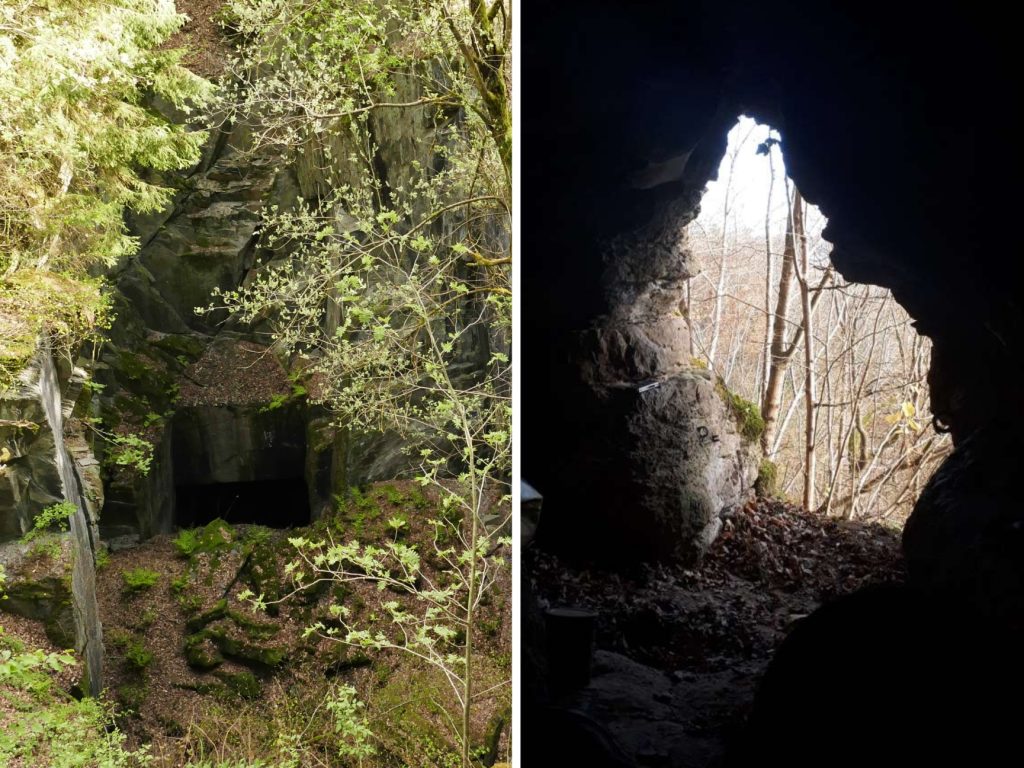
Abstract
Underground cavities have a high cultural value. As a deposit of prehistoric artifacts and paintings, they provide information about the life of our ancestors and, with their sinter formations, serve as a magnet for tourists and as a climate archive. Yet, the simultaneously high natural value of underground cavities as a structurally rich habitat is often lost.
In Central Europe, around 20 species of bats and about 450 mainly invertebrate animals depend on subterranean terrestrial habitats. The European Union’s Habitats Directive (92/43/EU) recognizes the ecological importance of subterranean sites and protects “caves not open to the public” as a specific habitat type (8310), which implies also a regular reporting to the EU. In Luxembourg, there is no reporting on LRT8310 and no basic status assessment available. Furthermore, semi-natural and artificial underground habitats such as caves, abandoned quarries and mines are recognized and protected as important ecosystems in Luxembourg via the Biotope Protection (BK22). For this reason, the project will
a) provide a basic data collection on the status of LRT8310 and BK22-relevant subterranean habitats in Luxembourg,
b) develop and carry out a representative national monitoring for LRT8310, and
c) scientifically study individual subterranean sites, cave-dwelling organisms and biotopes.
Together, these aspects will produce important scientific findings which will be incorporated into nature and species protection plans at various levels. The data generated will over time lead to a better general understanding of the drivers of the decline in underground biodiversity and serve to develop scientifically sound countermeasures.
Project status
- Phase 1: Project granted by the Fonds d’environnement of the MECDD. Duration: 3 years (30.09.2020 – 31.12.2023).
Phase 2: Project granted by the Fonds d’environnement of the MECB. Duration 4 years (01.01.2024 – 31.12.2027) - Host institution: Fondation faune-flore @ Centre de recherche scientifique, Musée national d’histoire naturelle.
- Partners: MECB, ANF, Groupe Spéléologique Luxembourgeois (GSL), ProChirop, Dieter Weber & Hannah Weigand
Funding

With financial support from the Fonds pour la protection de l’environnement
Contact
- Alexander Weigand, Department of Zoology
phone: (+352) 462240 212
alexander.weigand@mnhn.lu
National Museum of Natural History (MNHNL)
Research center
Life science department
25, rue Münster
L-2160 Luxembourg
Publications
-
Weber, D., Brad, T., & Weigand, A. M. (2025). Water diviners described: six new species of the Niphargus aquilex (Crustacea, Amphipoda) complex. European journal of taxonomy, 1011, 1-79. https://doi.org/10.5852/ejt.2025.1011.3023
-
M Zagmajster et al. (2024). The Sub-BioMon Project: Developing and testing approaches to monitor subterranean biodiversity in karst. Karst Science Days Symposium Proceedings 2, 51-53.
-
O Kurina, A Weigand, D Weber (2024). Fungus gnat species new to Luxembourg (Diptera: Keroplatidae, Mycetophilidae). Bulletin de la Société des naturalistes luxembourgeois 126, 83-86.
-
F Rubel, S Zaenker, A Weigand, D Weber, L Chitimia-Dobler, O Kahl (2024). Atlas of ticks (Acari: Argasidae, Ixodidae) in Germany: 1st data update. Experimental and Applied Acarology 89 (2), 251-274.
-
Weber, D., & Weigand, A. M. (2023). Groundwater Amphipods of the Hyporheic Interstitial: A Case Study from Luxembourg and The Greater Region. Diversity, 15(3), 411. https://doi.org/10.3390/d15030411
-
Weigand, A., Zaenker, S., Weber, D., Schaper, S., Bröker, M., Zaenker, C., & Chitimia-Dobler, L. (2023). Tick findings from subterranean environments in the Central German Uplands and Luxembourg reveal a predominance of male Ixodes hexagonus. Experimental and Applied Acarology, 1-13. https://doi.org/10.1007/s10493-023-00795-2
- Weigand AM, Bücs S-L, Deleva S, Lukić Bilela L, Nyssen P, Paragamian K, Ssymank A, Weigand H, Zakšek V, Zagmajster M, Balázs G, Barjadze S, Bürger K, Burn W, Cailhol D, Decrolière A, Didonna F, Doli A, Drazina T, Dreybrodt J, Ðud L, Egri C, Erhard M, Finžgar S, Fröhlich D, Gartrell G, Gazaryan S, Georges M, Godeau J-F, Grunewald R, Gunn J, Hajenga J, Hofmann P, Knight LRFD, Köble H, Kuharic N, Lüthi C, Munteanu CM, Novak R, Ozols D, Petkovic M, Stoch F, Vogel B, Vukovic I, Hall Weberg M, Zaenker C, Zaenker S, Feit U, Thies J-C (2022) Current cave monitoring practices, their variation and recommendations for future improvement in Europe: A synopsis from the 6th EuroSpeleo Protection Symposium. Research Ideas and Outcomes 8: e85859. https://doi.org/10.3897/rio.8.e85859